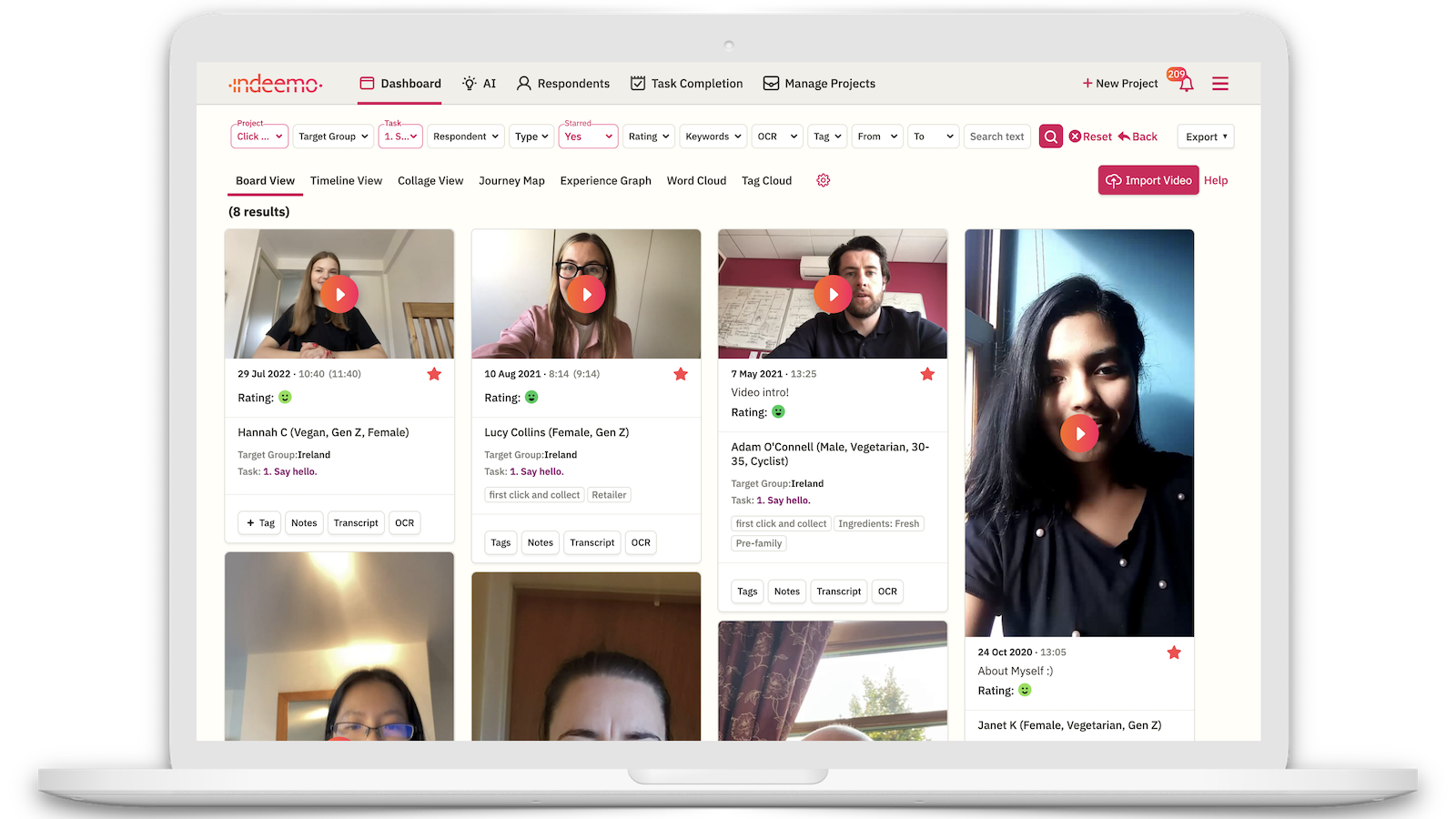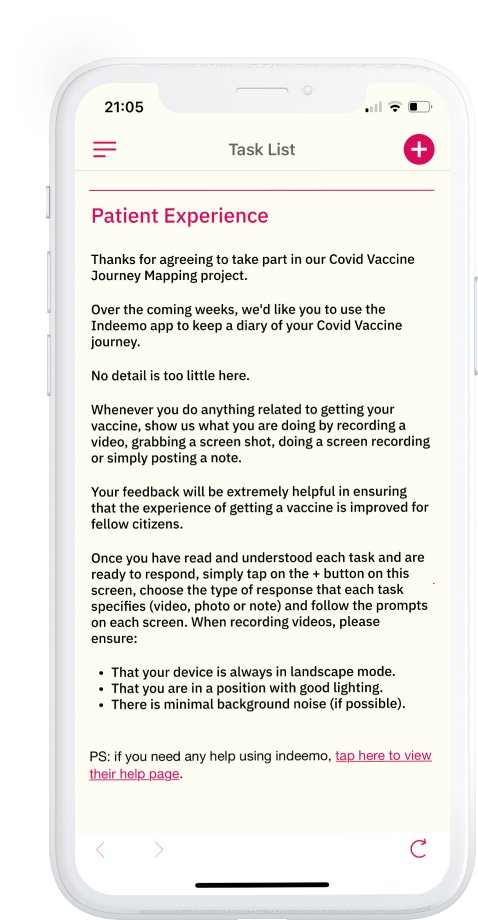The Power of Ecological Momentary Assessment (EMA) and Real-Time Data Collection
Ecological Momentary Assessment (EMA) is an innovative method of data collection that has gained popularity in both academic and healthcare research. This technique allows researchers to collect real-time data from individuals in their natural environment, which provides a more accurate reflection of their behaviour and experiences. In this blog post, we will discuss what EMA is, how it works, and why it is becoming a leading methodology.
What is Ecological Momentary Assessment (EMA)?
EMA is a research method that involves collecting data from individuals in their natural environment using mobile devices such as smartphones, tablets, or wearable technology. EMA allows researchers to collect data on a variety of variables, including mood, behaviour, and physiological responses, as they occur in real-time. This method can be used to study a range of behaviours, such as smoking, exercise, medication adherence, and dietary habits for example. With the inception of innovative primary data collection tools, EMA is increasingly being adopted as a robust and flexible methodological approach
The Origins of EMA
Ecological Momentary Assessment (EMA) has its roots in the field of ecological psychology, which emerged in the mid-20th century as a reaction to the limitations of laboratory-based psychological research. Ecological psychology emphasises the importance of studying behaviour in the context of the natural environment, and recognises that behaviour is influenced by a complex array of internal and external factors.
The first EMA studies were conducted in the 1970s and 1980s, and used paper-and-pencil diaries to collect data on daily experiences and behaviours. These early studies were limited in scope and lacked the technological advances that have since made EMA a highly effective research methodology.
The widespread adoption of mobile technology, such as smartphones and wearable devices, has played a significant role in the development of EMA as a methodology. Today, EMA studies can be conducted using a variety of devices and platforms, including mobile apps such as Indeemo, text messaging, and web-based surveys.
EMA has become an increasingly popular research method in healthcare, with applications in fields such as psychology, psychiatry, public health, and medicine. Its ability to capture real-time data on health-related behaviours and experiences makes it a valuable tool for studying the complex, dynamic processes that underlie health and illness.
Why is EMA becoming a Leading Methodology?
EMA offers several advantages over traditional research methods, including:
Enhanced accuracy and ecological validity
EMA allows researchers to collect data in real-time and in the participant's natural environment, providing a more accurate reflection of their behaviour and experiences. This can lead to a better understanding of the factors that influence behaviours and experiences.
Increased participant engagement
EMA can be more engaging for participants than traditional research methods, as it allows them to be more involved in the research process and provides immediate feedback on their behaviour and experiences.
Improved data quality
EMA allows researchers to collect more frequent and detailed data, which can improve the quality and reliability of the data collected.
Flexibility
EMA can be tailored to the specific needs of the research question and the participant population, making it a highly flexible research method.

Additional Capabilities
In addition to Video Surveys, you can also do the following with Indeemo:
• Recruit Participants in hours
Recruit B2C and B2B participants in hours from a panel of 3 million+ Respondents.
• Speed up analysis with Generative AI
Use Generative AI prompts for summarisation, translation, thematic analysis, sentiment analysis etc. and reduce analysis time by at least 40%.
• Analyse Interviews and IDIs
Import your interviews from Zoom, Microsoft Teams or your computer, transcribe them in 27 languages and analyse them fast with Generative AI.
• Analyse Interviews and IDIs
Import your interviews from Zoom, Microsoft Teams or your computer, transcribe them in 27 languages and analyse them fast with Generative AI.
Applications of Ecological Momentary Assessment
With its growth in popularity, EMA has becoming a leading methodology in a variety of fields. Here are some examples of areas where EMA has been used.
Psychology and Mental Health
EMA has been used extensively in psychology and mental health research to study a variety of phenomena, including mood disorders, stress, and addiction. For example, researchers have used EMA to study the impact of stress on daily life, tracking participants' experiences of stress in real time and identifying the factors that contribute to stress. EMA has also been used to study the onset and progression of mood disorders, such as depression and bipolar disorder, by tracking participants' moods and behaviours over time.
Education and Learning
EMA has also been applied in educational research to study learning and academic performance. Researchers have used EMA to track students' engagement and motivation in real time, as well as to study the impact of various learning interventions on students' performance. For example, researchers have used EMA to study the effects of feedback interventions on students' learning, tracking their engagement and performance over time.
Social Sciences
EMA has been used in a variety of social science fields to study topics such as social interactions, media use, and environmental behaviour. For example, researchers have used EMA to study the impact of social interactions on emotional experiences, tracking participants' experiences of positive and negative emotions in social situations. EMA has also been used to study the effects of media use on behaviour, such as tracking participants' experiences of food cravings in response to advertisements.
Sports and Performance
EMA has also been applied in sports and performance research to study the factors that contribute to athletic performance. For example, researchers have used EMA to study the impact of pre-performance routines on athletes' performance, tracking their experiences of anxiety and confidence in the moments leading up to competition. EMA has also been used to study the effects of fatigue and recovery on athletic performance, tracking athletes' experiences of physical and mental fatigue over time.
Overall, EMA is a versatile research methodology that can be applied in a variety of fields to study a wide range of phenomena. By capturing real-time data on participants' experiences and behaviours, EMA provides a powerful tool for understanding the complex and dynamic processes that underlie human behaviour.
How does EMA work?
Nowadays, EMA typically involves participants carrying a mobile device with them throughout the day and responding to prompts or questions that are sent to the device at various intervals. These prompts (i.e. push notifications) can be programmed to occur at random times or at specific times of day, and can be tailored to the individual participant's schedule and routine. Participants may be asked to respond to questions about their current mood, behaviour, or environment, or to provide information about their experiences throughout the day.
There are two main types of Ecological Momentary Assessment (EMA) that can be applied in healthcare research: time-based EMA and event-based EMA.
Time-Based EMA
Time-based EMA involves collecting data at specific intervals throughout the day, such as every hour or every four hours for example. Participants are prompted to respond to a set of questions or tasks at each time interval, providing researchers with a snapshot of the participant's behaviour and experiences in the moment. Time-based EMA is useful for studying behaviours that occur throughout the day, such as physical activity, sleep, and dietary habits.
For example, a study using time-based EMA may ask participants to report their current level of physical activity, mood, and stress every two hours throughout the day. This data can be used to identify patterns in physical activity and their relationship to mood and stress throughout the day.
Indeemo Ecological Momentary Assessment Tool
Event-Based EMA
Event-based EMA involves collecting data in response to specific events or experiences, such as when a participant engages in a specific behaviour or experiences a specific emotion. Participants are usually required to respond to a set of questions or tasks when the event occurs, providing researchers with information about the context and factors that influence the behaviour or experience. Event-based EMA is useful for studying behaviours that occur less frequently or in response to specific triggers, such as smoking, substance use, or emotional experiences.
For example, a study using event-based EMA may ask participants to report their mood and level of craving immediately before and after smoking a cigarette. This data can be used to identify triggers for smoking and the relationship between smoking behaviour and mood.
Both time-based and event-based EMA have their strengths and weaknesses, and researchers may choose to use one or both methods depending on the research question and participant population. Overall, EMA is a highly flexible and effective method for collecting real-time data on a variety of behaviours, and has the potential to transform the way we understand and address health-related issues in research.
EMA Design with Indeemo
Indeemo also offers a range of tasking options to suit different study designs and research questions. These tasking options include:
All at Once Tasking
This tasking option allows researchers to send all tasks at the same time. This is useful for studies where participants may have a short window of time to complete a task, such as in clinical settings or in studies where participants are busy or have limited access to their phone. This type of tasking can be particularly useful for event-based EMA studies where participants are asked to report on their experiences and behaviours as they occur.
Scheduled Tasking
This tasking option allows researchers to schedule tasks at specific times or intervals, such as every day at the same time or at random intervals throughout the day. This is useful for studies that require data to be collected at specific times or intervals, such as studies investigating the effects of medication on daily symptoms. This type of tasking can be useful for time-based EMA.
Sequential Tasking
This tasking option allows researchers to send tasks in a specific sequence or order, with each item triggering the next item in the sequence. This is useful for studies that require participants to complete a series of tasks or surveys in a specific order, such as in studies investigating the effects of stress on daily coping strategies. This type of tasking can be useful for both time-based and event-based EMA studies, depending on the research question and design.
A Summary of Ecological Momentary Assessment
EMA has been used in a variety of research studies, including studies on smoking cessation, physical activity, medication adherence, stress management, and online behaviours to name a few. Increasingly, EMA has been shown to be a highly effective method for collecting real-time data on health-related behaviours and outcomes, and has the potential to revolutionise healthcare research.
In conclusion, Ecological Momentary Assessment (EMA) is a powerful research method that allows researchers to collect real-time data on health-related behaviours and outcomes. EMA offers several advantages over traditional research methods, including enhanced accuracy and ecological validity, increased participant engagement, improved data quality, and flexibility. As such, EMA is becoming a leading methodology in healthcare research and has the potential to transform the way we study and understand health-related behaviours and outcomes.
Contact us
We’ve supported thousands of EMA studies for a variety of objectives including, patient experiences, online gaming behaviours, and Gen Z Skincare Routine
If you’d like to learn how Indeemo can support your next EMA project please get in touch and we can set up a call with one of our Strategists to discuss your own specific research requirements.






